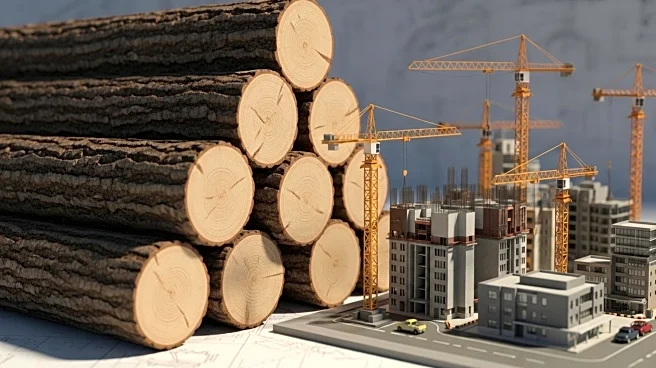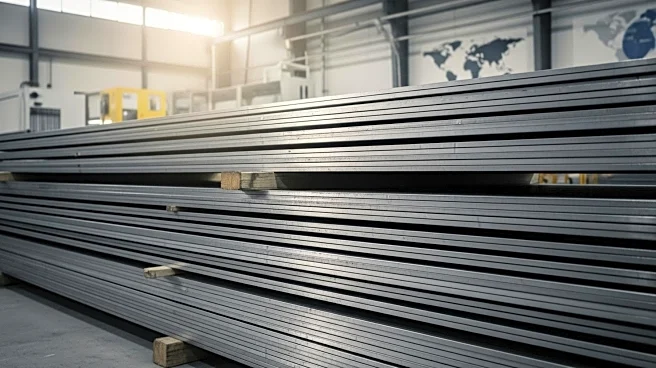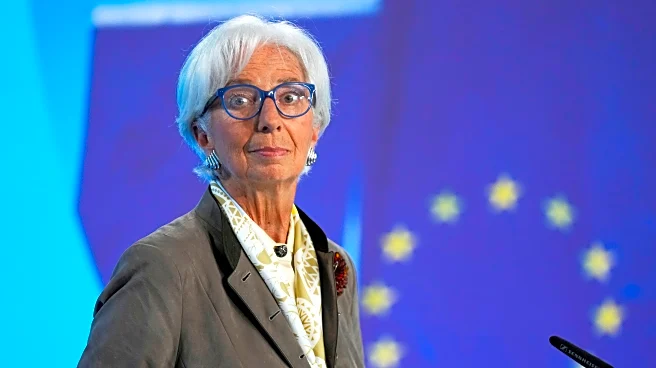What is the story about?
What's Happening?
President Trump has announced a 10% tariff on softwood lumber and timber products, set to take effect on October 14th. This move targets lumber imports, which account for 37% of all forestry imports into the U.S., primarily sourced from Brazil and Northern Europe. The announcement has prompted importers to expedite shipments before the tariff implementation. Lumber is a critical material in U.S. construction, used for building frames, roofing, decking, and structural beams, as well as in logistics for pallets and crates. The tariff is expected to impact the supply chain significantly, with Germany being a major exporter of lumber to the U.S., accounting for 50% of exports transported mainly by handysize and handymax vessels.
Why It's Important?
The tariff on softwood lumber is poised to have substantial implications for the U.S. construction and logistics sectors. As lumber is integral to building infrastructure and industrial packaging, the increased cost due to tariffs could lead to higher construction costs and affect the logistics industry. Importers may face challenges in redirecting exports, given the U.S. is the primary destination for lumber from Germany and other regions. The tariff could also influence freight rates and shipping dynamics, as seen with the surge in HS2 shipping route rates, indicating market anticipation of the tariff's impact.
What's Next?
With the tariff set to take effect soon, stakeholders in the construction and logistics industries may need to adjust their strategies to mitigate increased costs. Importers might seek alternative sources or negotiate new trade agreements to offset the tariff's impact. The U.S. government and industry leaders may also explore domestic production enhancements to reduce reliance on imports. The tariff could lead to broader trade negotiations and adjustments in international trade policies, particularly with major lumber-exporting countries.
Beyond the Headlines
The tariff decision reflects broader protectionist trends in U.S. trade policy under President Trump, aiming to bolster domestic industries. This move could trigger discussions on sustainable forestry practices and the environmental impact of increased domestic production. Additionally, the tariff may influence geopolitical relations with exporting countries, potentially leading to retaliatory measures or new trade agreements.
AI Generated Content
Do you find this article useful?














